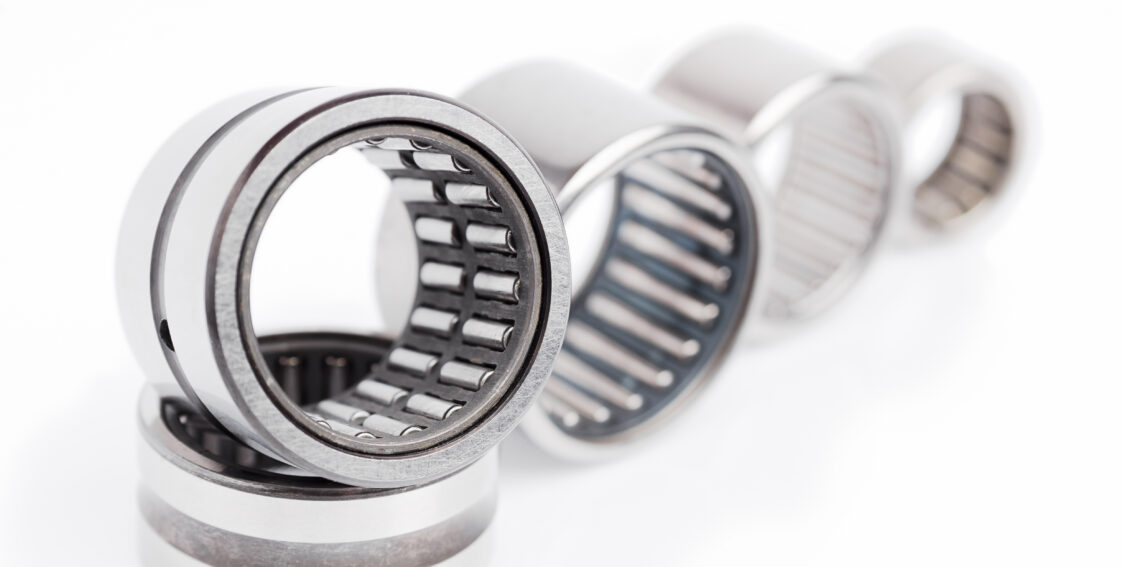
A Guide to Needle Bearings
Needle bearings are small, lightweight bearings that are capable of withstanding heavy load capacities. They can often be found in many automotive and aerospace components, from rocker arm pivots to compressors.
In this complete guide, we’ll cover the components of a needle roller bearing, as well as its benefits and industry applications.
What Are Needle Roller Bearings?
A needle roller bearing is one type of roller bearing that features thin “needle” rollers. As mentioned earlier, they are small, rigid, and durable. They also have a small coefficient of friction, which allows them to easily transfer motion on rotating surfaces.
What Are the Types of Needle Bearings?
The two main types of needle roller bearings are those without inner rings and those with inner rings. Additionally, there are several classifications of needle roller bearings: radial and thrust. The classification is based on the direction of the load that the bearing is supporting. There are also needle bearings that are specific to certain applications, including roller followers and cam followers.
Components of a Needle Roller Bearing
Depending on the type of needle bearing, there are essentially four major components to a needle bearing: the raceway, the inner ring, the cage, and the rollers. The needle rollers are placed inside the cage and then the cage is assembled and integrated with the outer ring and inner ring.
Let’s talk about one of the most important components of the needle roller bearing—the needle rollers!
What Are Loose Needle Rollers?
A loose needle roller is the load-carrying component and rolling element of the bearing. They can be found in all types of needle bearings, regardless of their size or type. While they have a low coefficient of friction, they do benefit from high transmission efficiency, which means they generate lower heat during operation. This, in turn, means they require less lubrication (oil or grease) and are typically easy to maintain.
Loose needle rollers come in multiple sizes and are heat-treated, which increases hardness and strength while extending service life. Additionally, they can appear in single or double-row bearings. While they’re largely used in needle bearings, they can also be used as locating pins.
Characteristics of Rollers
Needle roller bearings are capable of withstanding high axial and radial loads and have a diameter of 1.5 millimeters to 12 millimeters, and a length of four millimeters to 100 millimeters. Additionally, the International Organization for Standardization (ISO) has their own set of standards for rollers.
Depending on the industry and application, rollers could be made from a wide array of medium- to high-carbon alloy steel and stainless steel, including:
- SAE 52100, 1085, & 1055
- Stainless Steel 303, 304, 313, & 440
Rollers have excellent rigidity and are generally rated at a minimum of HRC 58 (Rockwell C Scale). In this scale, the higher the number, the harder the steel. However, a higher number doesn’t necessarily mean better. Hardness typically just refers to the steel’s resistance to penetration and deformation. How hard the steel needs to be depends on the application. At Universal Bearings, we typically harden and temper our loose rollers to HRC 60 to 64 depending on the application.
Now that you know more about rollers, let’s talk about other important components of a needle bearing: the inner and outer rings.
What Are the Inner & Outer Rings?
The inner ring is considered the rotating element of the bearing. Compared to the outer ring, the inner ring is smaller in diameter. As previously mentioned, some types of needle roller bearings do not have an inner ring.
Both the inner and outer rings are typically made from an alloy steel, and then heat-treated to improve the hardness, load capacity, and life of the bearing.
What Is the Cage?
The bearing cage, often called a separator, guides and holds all of the rollers in place (and apart from one another). The separation of the rollers is essential to ensure even load distribution. A cage can also help reduce any noises and sliding. While most needle bearings have cages, some drawn cup needle bearings may not have them.
Benefits
Aside from their low coefficient of friction, needle bearings are:
- Easy to Maintain
- Capable of Handling Heavy Axial & Radial Loads
- Highly Durable
- Have Excellent Rigidity
- Can Handle High Rotating Speeds
Industry Applications of Needle Bearings
While needle bearings are largely used within the automotive industry, there are many other applications for these universal parts. Needle roller bearings are used in heavy-duty residential and commercial equipment and machinery, while also being employed in the aerospace, defense, and medical markets. They are most often found in engines, steering systems, torque converters, and even domestic appliances.
The Lifespan of a Needle Bearing
In general, there is no universally accepted answer to this question. In the automotive sector, needle bearings have been known to last upwards of 12 years or more in engines (when the right lubrication is used and proper maintenance is followed).
However, the lifespan of a needle bearing (number of rotations) depends largely upon the quality of the bearing (e.g. the quality of steel and manufacturing process), how well-maintained it is, the operating conditions, and its load rate.
Learn More From Universal Bearings
Universal Bearings has long been recognized as a market leader and innovator capable of designing and manufacturing a wide range of customized needle roller bearings. Whether we’re working from customer-provided schematics, or helping you design a bearing based on your application and specific operating conditions, we’re ready to help.
Have questions? Contact us today! We look forward to hearing from you.



